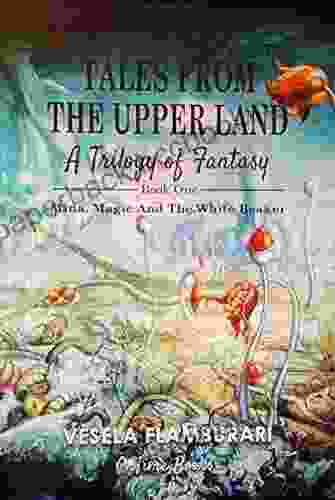The Social Life of Kimono: Unveiling Japan's Cultural Tapestry Through its Iconic Garments

The kimono, an enduring symbol of Japanese culture, is not merely a piece of clothing but a living embodiment of the nation's artistic heritage and social history. In its intricate folds and vibrant hues, a rich narrative unfolds, weaving together threads of tradition, identity, and the ebb and flow of time. This remarkable book, titled "The Social Life of Kimono," takes us on a captivating journey into this enchanting world, where fashion and culture intertwine, revealing the multifaceted role of the kimono in shaping Japanese society.
4.8 out of 5
| Language | : | English |
| File size | : | 10657 KB |
| Text-to-Speech | : | Enabled |
| Screen Reader | : | Supported |
| Enhanced typesetting | : | Enabled |
| Word Wise | : | Enabled |
| Print length | : | 256 pages |
A Glimpse into the Past: The Genesis of the Kimono
The origins of the kimono can be traced back to the Heian period (794-1185),a time of great cultural refinement and artistic expression in Japan. During this era, the kimono emerged as an elegant and flowing robe, worn by both men and women. Over the centuries that followed, the kimono underwent subtle transformations, adapting to changing social norms and aesthetic preferences. By the Edo period (1603-1868),the kimono had become the quintessential attire, worn by people from all walks of life, from the imperial court to the commoners.
The Symbolism and Significance of Kimono
Kimonos are more than just garments; they are vessels of symbolism and repositories of cultural meaning. The choice of fabric, pattern, and color conveys a wealth of information about the wearer's age, marital status, social rank, and occasion. For example, unmarried women traditionally wear furisode, an elaborate kimono with long, trailing sleeves, while married women opt for tomesode, a more subdued kimono with shorter sleeves. The intricate patterns adorning kimonos often carry special significance, representing auspicious symbols such as cranes (longevity),pine trees (endurance),and waves (tranquility).
Kimono as a Reflection of Social Stratification
In pre-modern Japan, kimonos played a crucial role in maintaining social hierarchy and reinforcing class distinctions. Sumptuary laws dictated the types of fabrics, patterns, and colors that could be worn by different social classes. For instance, only members of the imperial court and the highest ranks of nobility were permitted to wear kimonos made from the finest silk and adorned with elaborate embroidery. By strictly regulating the use of kimonos, society ensured that each individual's place within the rigid social Free Download was clearly visible and respected.
The Evolution of Kimono in Modern Times
The Meiji Restoration (1868) ushered in a period of rapid modernization and Westernization in Japan. The adoption of Western clothing styles led to a decline in the popularity of kimonos, especially among younger generations. However, the kimono has never fully disappeared from Japanese society. In recent decades, there has been a resurgence of interest in traditional Japanese culture, leading to a renewed appreciation for the kimono. Today, kimonos are worn for formal occasions, cultural events, and special celebrations, embodying a sense of timeless elegance and connection to Japan's rich past.
The Kimono as a Canvas for Artistic Expression
Throughout history, kimonos have served as a medium for artistic expression, showcasing the immense creativity and technical skill of Japanese artisans. The intricate patterns and motifs that adorn kimonos are often inspired by nature, literature, and folklore. Dyers, weavers, and embroiderers work meticulously to create kimonos that are not only visually stunning but also imbued with deep cultural significance. The art of kimono making is a testament to the enduring power of Japanese craftsmanship and its unwavering commitment to preserving cultural traditions.
"The Social Life of Kimono" is an indispensable guide to understanding the multifaceted nature of this iconic Japanese garment. Through a captivating blend of historical insights, cultural analysis, and stunning imagery, this book invites readers to explore the hidden world behind kimonos. By unraveling the intricate threads that connect kimonos to Japanese society, the book sheds light on the complex relationship between fashion, culture, and history. As we delve into the pages of this remarkable work, we gain a profound appreciation for the enduring legacy of the kimono and its invaluable contribution to Japanese identity and heritage.
4.8 out of 5
| Language | : | English |
| File size | : | 10657 KB |
| Text-to-Speech | : | Enabled |
| Screen Reader | : | Supported |
| Enhanced typesetting | : | Enabled |
| Word Wise | : | Enabled |
| Print length | : | 256 pages |
Do you want to contribute by writing guest posts on this blog?
Please contact us and send us a resume of previous articles that you have written.
 Book
Book Novel
Novel Page
Page Chapter
Chapter Text
Text Story
Story Genre
Genre Reader
Reader Library
Library Paperback
Paperback E-book
E-book Magazine
Magazine Newspaper
Newspaper Paragraph
Paragraph Sentence
Sentence Bookmark
Bookmark Shelf
Shelf Glossary
Glossary Bibliography
Bibliography Foreword
Foreword Preface
Preface Synopsis
Synopsis Annotation
Annotation Footnote
Footnote Manuscript
Manuscript Scroll
Scroll Codex
Codex Tome
Tome Bestseller
Bestseller Classics
Classics Library card
Library card Narrative
Narrative Biography
Biography Autobiography
Autobiography Memoir
Memoir Reference
Reference Encyclopedia
Encyclopedia Tom O Neill
Tom O Neill Melvin Jules Bukiet
Melvin Jules Bukiet Steve Angers
Steve Angers Tom Nicoll
Tom Nicoll Mark Crispin Miller
Mark Crispin Miller Stephen P Anderson
Stephen P Anderson Sj Bennett
Sj Bennett Robert Kirk
Robert Kirk Reed K Holden
Reed K Holden Patrick Tyler
Patrick Tyler Theodore Kendris
Theodore Kendris Sally Moomaw
Sally Moomaw Margot Kahn
Margot Kahn Timothy Dukes
Timothy Dukes Marc Thoma
Marc Thoma Linda E Mccuistion
Linda E Mccuistion Marty Human
Marty Human Simon Hanselmann
Simon Hanselmann S M R Saia
S M R Saia Ollie Ollerton
Ollie Ollerton
Light bulbAdvertise smarter! Our strategic ad space ensures maximum exposure. Reserve your spot today!

 Aleksandr PushkinJourney into the Enigmatic Realm of the Painted Desert: Uncovering the Rich...
Aleksandr PushkinJourney into the Enigmatic Realm of the Painted Desert: Uncovering the Rich...
 Deion SimmonsChickens Just Facts For Kids: Your Ultimate Guide to the Wonderful World of...
Deion SimmonsChickens Just Facts For Kids: Your Ultimate Guide to the Wonderful World of...
 Chadwick PowellMagnificent Mabel And The Very Bad Birthday Party: An Enchanting Journey of...
Chadwick PowellMagnificent Mabel And The Very Bad Birthday Party: An Enchanting Journey of... Tyler NelsonFollow ·8.4k
Tyler NelsonFollow ·8.4k Guy PowellFollow ·2.8k
Guy PowellFollow ·2.8k Hugh BellFollow ·12.9k
Hugh BellFollow ·12.9k Seth HayesFollow ·3.7k
Seth HayesFollow ·3.7k Arthur Conan DoyleFollow ·13k
Arthur Conan DoyleFollow ·13k Vladimir NabokovFollow ·3k
Vladimir NabokovFollow ·3k August HayesFollow ·18.1k
August HayesFollow ·18.1k Edwin CoxFollow ·8k
Edwin CoxFollow ·8k

 E.M. Forster
E.M. ForsterBluewater Walkabout: Into the Pacific
An Unforgettable...

 Joseph Foster
Joseph FosterUnlock the Secrets of Standardized Test Success with Test...
Are you tired of struggling with standardized...

 Joe Simmons
Joe SimmonsUnlock Learning with Flash Cards for Kindergarten:...
Ignite a Passion for...

 Raymond Parker
Raymond ParkerJourney into the Enchanting World of "The Heart Kingdom"...
A Timeless Tale of Love,...
4.8 out of 5
| Language | : | English |
| File size | : | 10657 KB |
| Text-to-Speech | : | Enabled |
| Screen Reader | : | Supported |
| Enhanced typesetting | : | Enabled |
| Word Wise | : | Enabled |
| Print length | : | 256 pages |









